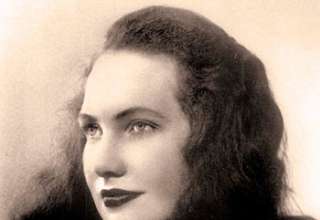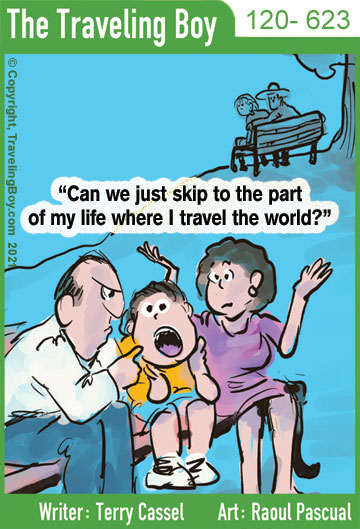
Leonard Maltin on “Our City Tonight”
Traveling Yesterday & Today
HealthCareInsider.com surveyed over 1,180 U.S. adults on current COVID attitudes and the return to normalcy.

- 34% of Americans say they are already comfortable traveling
- 32% of Boomers/Gen X are already comfortable traveling compared to 26% of Gen-Z/Millennials
- 20%don’t think they’ll be comfortable traveling until 2023 or later
- At 60%, travel is the most common life event put off by the pandemic
- Out of ten public activities, travel was the most looked forward to after the pandemic
Sightless Fiji
By Richard Carroll

Fiji has a profound long-lasting effect on my heart and soul. An island country deep in the South Pacific where nature comes miraculously alive with cloud rain forests, a lush tropical mountainous terrain, 333 islands, hundreds of islets, and sweeping views of a dark blue crystal clear sea, all of which seem to be suspended in time. Fiji’s dramatic setting of upscale island holiday hideaways offering pollution free skies, an unrelenting sun shimmering on glistening water, and palm-lined beaches, have attracted visitors from all parts of the world.
Read more about FijiI experienced a heart-tugging dilemma on one of numerous visits this time with Dr. Beeve, a noted eye physician and surgeon based in Glendale California and his wife Dorothy an RN, that unfortunately this ideal scenario of sun and sea is also a huge negative for the Fijian’s creating blinding cataracts affecting a huge number of Fijians of all ages along with other troubling eye difficulties.
Fijians travel from island to island in canoes and boats, fish and farm the ocean, swim before they can walk, and are living an island lifestyle which from birth seriously affects their eyesight. The stinging contrast is the Fijians might not be the happiest people on earth, but are affable and forthcoming, welcoming visitors with open arms, regardless of personal difficulties, of which are usually overlooked or ignored by tourists.
I found this distressing and heart-tugging drama unbelievably touching. Men unable to work and support their families because they are sightless, children born with eye deficiencies, a grandmother who has never seen her grandchildren, Fijians unable to leave their island because of poor eyesight, and young mothers who see their offspring as a milky blur. I noticed that even most of the dogs had cataracts too.
Since that visit in 1991 when the Beeve’s established the Beeve Foundation, Dr. Beeve and his staff quickly realized that the Fijians were receiving very limited eye care and medication, and had no access to modern medicine. On their first mission with a small staff which included an anesthesiologist, ophthalmic surgical technologist, a dental hygienist, and an assistant who helped with pre and post op care, and patient education and vision testing, set up a makeshift eye clinic in Bure 2 on upscale Turtle Island. The word quickly spread and hundreds of sight-impaired Fijians formed a long line patiently standing in the blazing sun, some arriving via canoes days in advance, the line of canoes stretching to the horizon. Many Fijians I spoke with could not remember when they had vision and were spellbound when the day after surgery they gazed at Dr. Beeve with better than 20/40 vision. The Beeve’s said, “When we complete a cataract operation it’s like resurrecting someone from the dead. It’s an incredible feeling.”

The Beeve Foundation Team in Fiji. Photo courtesy of the Beeve Foundation.
In 2017 the Beeve’s were honored for their more than 25 years of medical missions; 28,503 eye exams, issuing 27,714 pairs of glasses, 1,756 cataract extractions with lens implants, 55 corneal transplants, and 1,005 other procedures for more than 30,000 Fijian patients, the majority of whom were legally blind. Dr. Beeve and his wife Dorothy finally retired with Loma Linda University continuing the Fiji missions. In 2018 with a team of world-renowned cataract surgeons Loma Linda performed 137 surgeries in six days.
The Fijians live in a tropical paradise but with an ironic twist, but for a writer the unpredictability of travel can often leave a lingering memory, such as the Beeve’s and their Foundation successfully treating over three percent of the entire Fiji population.
T-Boy Society of Film & Music’s Top Road Movie
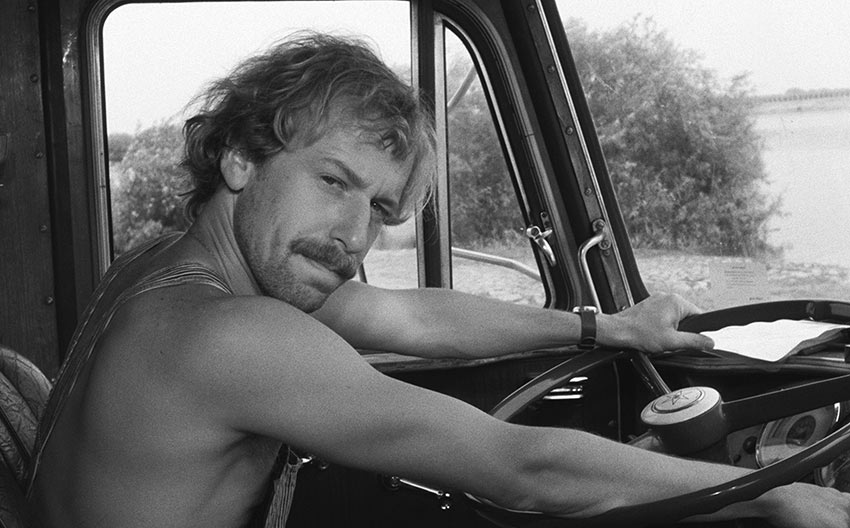
Wim Wenders’ highest watermark is 1976’s Kings of the Road about a movie projector mechanic (Wenders’ regular, Rüdiger Vogle), traveling the lonely backroads of pre-reunification West Germany to dilapidated movie theaters. He meets a depressed linguist, who just bungled a suicide attempt. The two decide to travel together in an attempt to come to terms with their own lives in a changing world. The final installment of Wenders’ Road Trilogy, shot in stark b/w by the brilliant Robby Müller (another Wenders’ regular).
MOREThe pharaoh’s painted tomb was missing its mummy

Discovered in 1817, the tomb known as KV17 was filled with extraordinary artifacts, from images of ancient deities to scenes from the legendary Book of Gates. But the pharaoh it was built for was nowhere to be found.
Read on for the story of how the tomb was discovered by a former circus strongman and gangs of tomb raiders, and how its pharaoh was lost and found.
This pharaoh’s painted tomb was missing its mummy(Note: You will need to subscribe to National Geographic.com for the full story)
In a new study, the T-Boy Society of Film & Music discovered the origin of the term Gaslighting
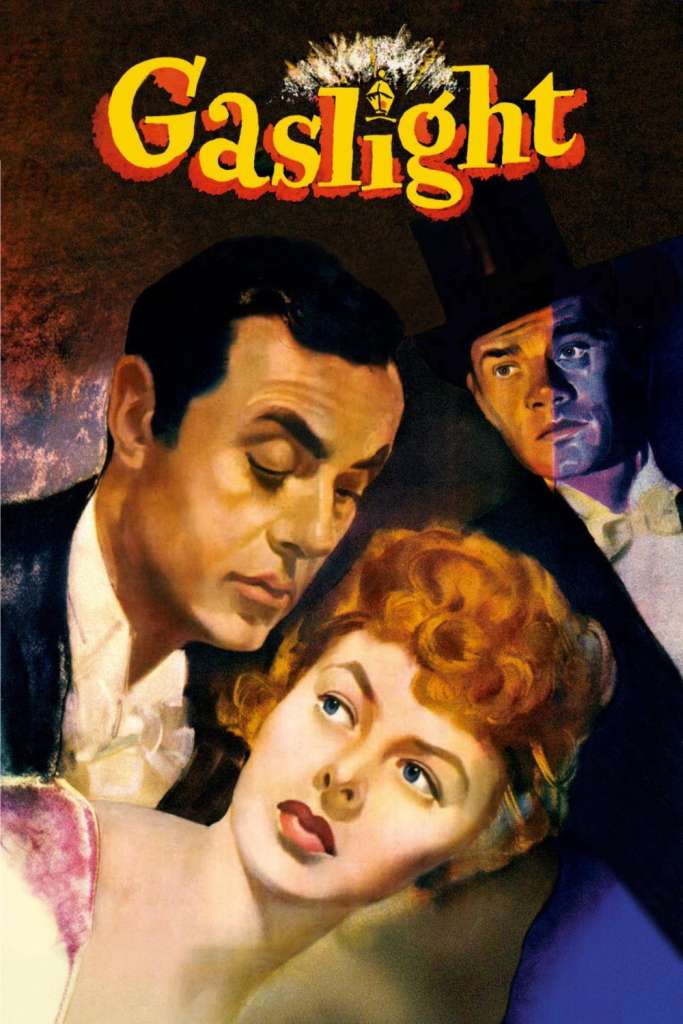
Definition: Gaslighting is an insidious form of manipulation where victims (generally spouses or the voting public) are systematically fed false disorienting and distressful information that leads them to question what they know to be true.
Research revealed that the origin of Gaslighting stems from the British play, Gas Lighting (1938) by Patrick Hamilton. It was then adapted to the 1940 British film directed by Thorold Dickinson as Gaslight (Angel Street in U.S.). The term hit the world platform with MGM film director George Cukor’s 1944 remake, Gaslight: a big budget psychological thriller starring Charles Boyer, Ingrid Bergman, Joseph Cotten, and Angela Lansbury (in her film debut). The narrative follows a young woman whose husband slowly manipulates her into believing that she is descending into insanity.
Sardinia’s Punta Molentis Beach

The ocean at Punta Molentis Beach has been described as a sparkling turquoise color, so transparent it resembles glass. What’s certain is that the sea is perfectly stunning along the entire coast here in Villasimius, a municipality of southern Sardinia. The area has been settled since prehistoric times, but the spectacular setting wasn’t always the draw; people first occupied this shore for its strategic defensive location on the Mediterranean Sea.
Movie of the Week:
Andrei Rublev (1966) by Andrei Tarkovsky
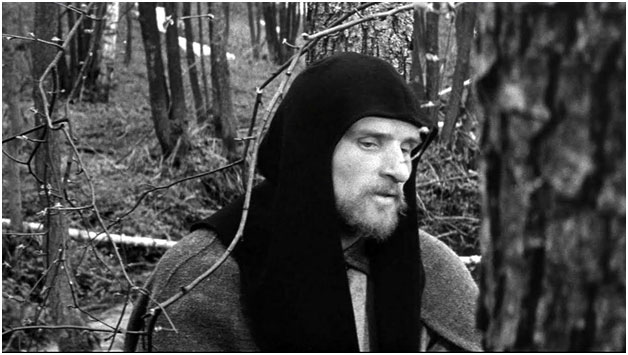
An expansive Russian drama, the film focuses on the religious icon painter Andrei Rublev, drifting from place to place in a tumultuous era. The peace-seeking monk eventually gains a reputation for his art. But, after Rublev witnesses a brutal battle and unintentionally becomes involved, he takes a vow of silence and spends time away from his work. As he begins to ease his troubled soul, he takes steps towards becoming a painter once again.
Spotify removes Neil Young’s music

Spotify removed Neil Young’s music from its streaming service after he posted a letter on his website saying he would not allow his catalog on the same platform as podcast host Joe Rogan’s “fake information” about coronavirus vaccines.
“They can have Rogan or Young. Not both,” Young said in the letter to his manager and record label. He said people spreading bogus information about vaccines could be killing people who believe it. Rogan, who hosts one of the most popular podcasts on Spotify, has faced frequent criticism for his statements on the pandemic, including that healthy young people shouldn’t get vaccinated.
Of course the press from both sides of the aisle are having a field day with all the latest development.
From NBC News From Fox Business NewsWhen a Winter Storm Triggered One of the Deadliest Disasters in D.C. History
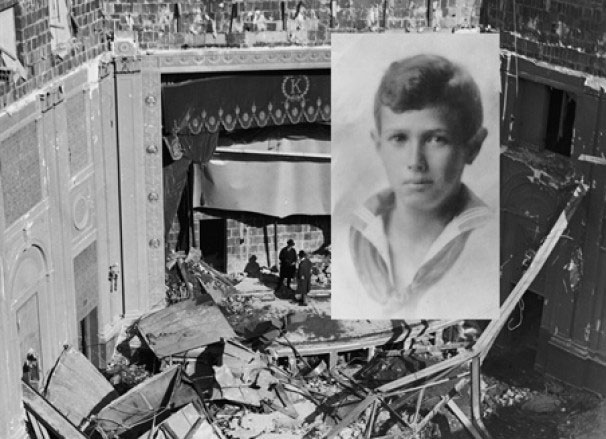
On January 28, 1922, the Knickerbocker Theatre’s snow-covered roof collapsed, killing 98 people and injuring another 133. It was a seemingly inconsequential homework assignment that saved Charles Lyman III’s life on the frigid night. The 14-year-old prep school student, Lyman was visiting family in Washington, D.C. when a major storm buried the city under almost two and a half feet of snow. On the second day of the blizzard, Lyman’s cousin David suggested spending a cozy evening watching a movie at the Knickerbocker Theatre in nearby Lanier Heights (now known as Adams Morgan). Lyman told him to go ahead with a friend, Kirkland Duke, and promised to join the pair after finishing his schoolwork.
Read moreTrudging through the snow about a half block away from the theater, Lyman heard a sudden boom followed by a chorus of terrified screams. The Knickerbocker’s roof had come crashing down, overwhelmed by the weight of the record-breaking snowfall.
In total, the collapse killed 98 people-including David and Kirkland-and injured another 133. According to Kevin Ambrose, author of a 2013 book on the blizzard, the tragedy marked the city’s deadliest single-day disaster. A century later, however, the Knickerbocker Theatre remains little known among the denizens of the nation’s capital.
“It’s not common knowledge now,” says Ambrose. “It was a horrendous disaster at the time … and [publicized] widely. But over the years, it’s slowly been forgotten.”
By the night of January 28, the blizzard had started to wind down. Braving the snow, more than 200 people walked to the theater to watch a silent comedy, Get-Rich-Quick Wallingford, that has since been lost. Moviegoers paid 25 cents for admission to the Knickerbocker, which Ambrose calls the Titanic of Washington theaters at the time, both for its elegant style and its fatal vulnerabilities to the forces of nature.
“It was the most opulent and luxurious theater in D.C., and it was in a very high-end part of town,” he says.
Opened to great fanfare on October 13, 1917, the Knickerbocker had a seating capacity of 1,700 and boasted both a movie screen and a stage, where a live orchestra played music to accompany the silent film of the day. On the night of the collapse, only about 11 of the 20 musicians showed up to the 9 p.m. showing.
Just after intermission, audience members heard a loud hissing noise that some described as the sound of sheets ripping. The Knickerbocker’s flat roof, burdened by the heavy weight of the wet snow, was starting to split down the middle. A small dust cloud started leaking from a crack in the ceiling above the stage but went unnoticed by most attendees. The orchestra kept on playing until the unthinkable happened.
“In a split second, the entire roof came down in one piece,” Ambrose says. “It was the worst-case scenario.”
The Sunday Star described the collapse in vivid terms: “Came a hiss-a terrific crash-the rattle and clatter of falling timber, stone, steel and plaster. … A stillness, an unearthly pause, followed the din. Then a scream, an agonized cry, a moan. Beneath tons of steel and masonry scores of men, women and children were buried.”
The falling roof struck the theater’s balcony and knocked down chunks of the brick walls. It hit the floor so forcefully that a gust of compressed air blew out the doors and windows, ejecting at least two people outside and inadvertently saving their lives. Other audience members were killed instantly or trapped under the rubble of concrete, twisted steel beams, bricks and plaster. In one haunting case, rescuers found an unidentified man who’d escaped the collapse physically unscathed, protected by steel beams that buckled upward to form an air pocket, but died of an apparent heart attack.
Future World War II general George S. Patton, then a major in the U.S. Army, led the rescue effort. He was recovering from an allergic reaction to seafood when he was called out of bed to coordinate the complicated undertaking. The initial scene was chaotic, with survivors and volunteers on the street scrambling to pull people out of the rubble. By midnight, 200 police officers, soldiers and firefighters were on the scene; by 6:30 a.m., their numbers had ballooned to 600. A fleet of ambulances from Walter Reed Army Medical Center helped evacuate the injured, and every hospital in the area was filled with Knickerbocker victims.
Several thousand onlookers gathered near the theater to watch in horror. According to news reports, local residents provided hot food and coffee for rescuers and blankets and wraps for the injured. Many nearby houses and stores were converted into temporary first-aid stations.
See the World with BeamZ

BeamZ Live is a platfrom connecting you to Live Interactive Entertainment, from Music to Travel Tours. Watch Free, Live-streamed Tours & Events from around the world.
Other places to visit in BeamZ
- Experience Budapest from above and enjoy a lovely walk on Gellért Hill-Citadel. You can’t miss seeing Budapest from above. Zsuzsi will start the tour on the top of Gellért hill, where you will be able to see the whole city with the amazing panorama of its main sights!
- Explore The Union Canal! Take a relaxing stroll with Sam through one of the main canals of the city and enjoy its many interesting landmarks.
- Spirit of Japan Let’s join Eriko and explore one of the most stylish business districts in Tokyo, filled with amazing modern architecture. We will be discovering the beauty of the Imperial Palace outer gardens, Tokyo central station, and the local’s favorite architecture that looks like a floating glass ship! Find out more on the tour!
- Australia’s Great Ocean Road: The 12 Apostles
Witness the rugged splendor of the famous 12 Apostles, magnificent rock stacks that rise up majestically from the Southern Ocean on Victoria’s dramatic coastline in Australia. The limestone pillars were once connected to the mainland cliffs. Waves and wind carved them into caves, then arches, and eventually battered them down into 150-foot-tall columns. Come with us for an adventure and explore the beauty of Australian nature with Alex!
Film Star of the Month:
Herbert Marshall
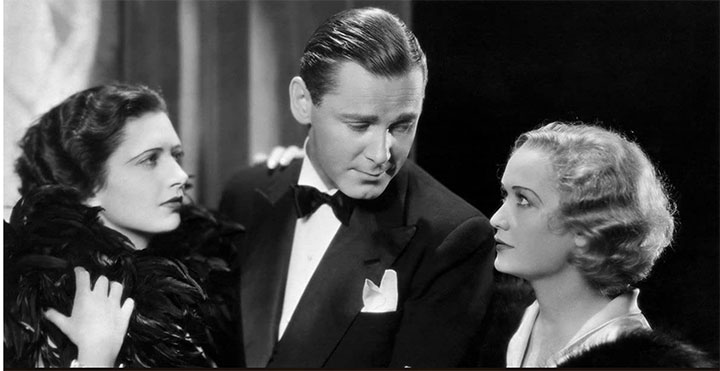
Herbert Marshall (1890 -1966) is considered by the T-Boy Society of Film & Music to have the greatest voice in film history. But, it was long path of self-determination that led him to his place as Hollywood royalty. His initial career in the theatre career was interrupted when he was shot in the left knee by a sniper at the Second Battle of Arras in France as a British solider during World War I.
Read More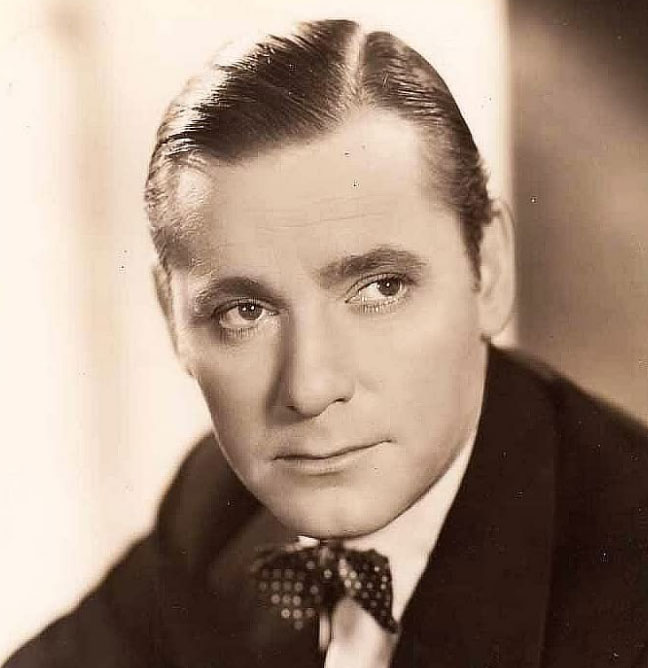
After a succession of operations, doctors were forced to amputate his leg. Marshall remained hospitalized for 13-months, and decided he wanted to return to the theatre, where he diligently learned how to walk with a prosthetic leg. While he was recovering, King George V visited the hospital, and was asked to pick which of the actor’s legs he thought was artificial. The king chose the wrong one.
Throughout his career, Marshall largely managed to hide the fact that he had a prosthetic limb, although it was occasionally reported in the press. He developed a very deliberate square-shouldered and guided walk, largely unnoticeable, to cover up his disability. His mellow baritone and British accent rolled out with a minimum of mouth movement and a nonchalant ease that stood out as unique. His rather blasé demeanor could take on various nuances, without overt emotion, to fit any role he played, whether comedy or drama. He filled the range from sophisticated romantic comedy, dignified military officers, doctors to various degrees of villainy, with his unemotional delivery meshing with the cold, impassive criminal character.
Marshall suffered from his war injury for the rest of his life, both from phantom pain, common to amputees, and from the prosthesis. One friend remembered that he kept holes in his trouser pocket so that he could inconspicuously loosen a strap on his prosthetic leg in order to ease sudden discomfort.The pain in his leg became more pronounced later in life, including bothering him on film shoots in ways noticeable to others and exacerbating his usually very slight limp.
During WW II, Marshall used his own money for travel to many military hospitals in the UK and US. In particular, he focused on encouraging soldiers with amputations to keep a positive attitude and not to think of themselves as handicapped or limited. Despite his usual reluctance to discuss his own injury, he talked freely about his personal experiences in order to give these amputees tips on how to use and adjust to their new artificial limbs. Although mostly kept private, a 1945 article in Motion Picture Magazine reported, against Marshall’s wishes, on his work at military hospitals. The author insisted that his story needed to be told to help injured veterans and their families and to show that “Marshall is doing one of the finest war jobs any human being can do.” She interviewed one young officer, who recalled: “Herbert Marshall gave me back my life. When I found out I had a metal claw instead of a hand, I was completely broken. Then one day, while I was in the hospital, we were told Herbert Marshall, the film star, was coming to talk to us. I was disgusted with the idea. A collar ad, I thought, coming to give us a Pollyanna speech!”
The officer added, “It turned out to be anything but that. Mr. Marshall talked real sense into us. He followed it up with demonstrations, actually showing us what he could do. Before he left, we were convinced that if he had been able to lead a normal life, we could do the same.”
The article also quoted a veteran with a double amputation (left leg and right foot), who praised Marshall for showing him how to dance with a prosthetic leg. He considered the actor’s advice and example to be his Ten Commandments General Dwight D. Eisenhower, Head of the Allied Forces in Europe, noted in private that, of all the film stars he met in Europe during the war, he was most impressed with Marshall and Madeleine Carroll (who worked as a nurse at field hospitals).
In Marshall’s stunning career in cinema, he appeared in Josef von Sternberg’s Blond Venus with Marlene Dietrich; Ernst Lubitsch’s Trouble in Paradise (1932) with Miriam Hopkins & Kay Francis and Angel (1937) with Dietrich again; Alfred Hitchcock’s Foreign Correspondent (1940) with Joel McCrea; and two by William Wyler, The Letter (1940) &The Little Foxes (1941), both costarring Bette Davis.
The T-Boy Society of Film & Music selected Herbert Marshall’s key film performances as the following: Josef von Sternberg’s Blond Venus; Ernst Lubitsch’s Trouble in Paradise (1932) & Angel (1937); Alfred Hitchcock’s Foreign Correspondent (1940; and two by William Wyler, The Letter (1940) & The Little Foxes (1941) both costarring Bette Davis.
See & hear Herbert Marshall & Miriam Hopkins in Ernst Lubitch’s Trouble in Paradise, discovering they’re both stylish criminal characters.
“Trouble in Paradise” (1933) – YouTube






